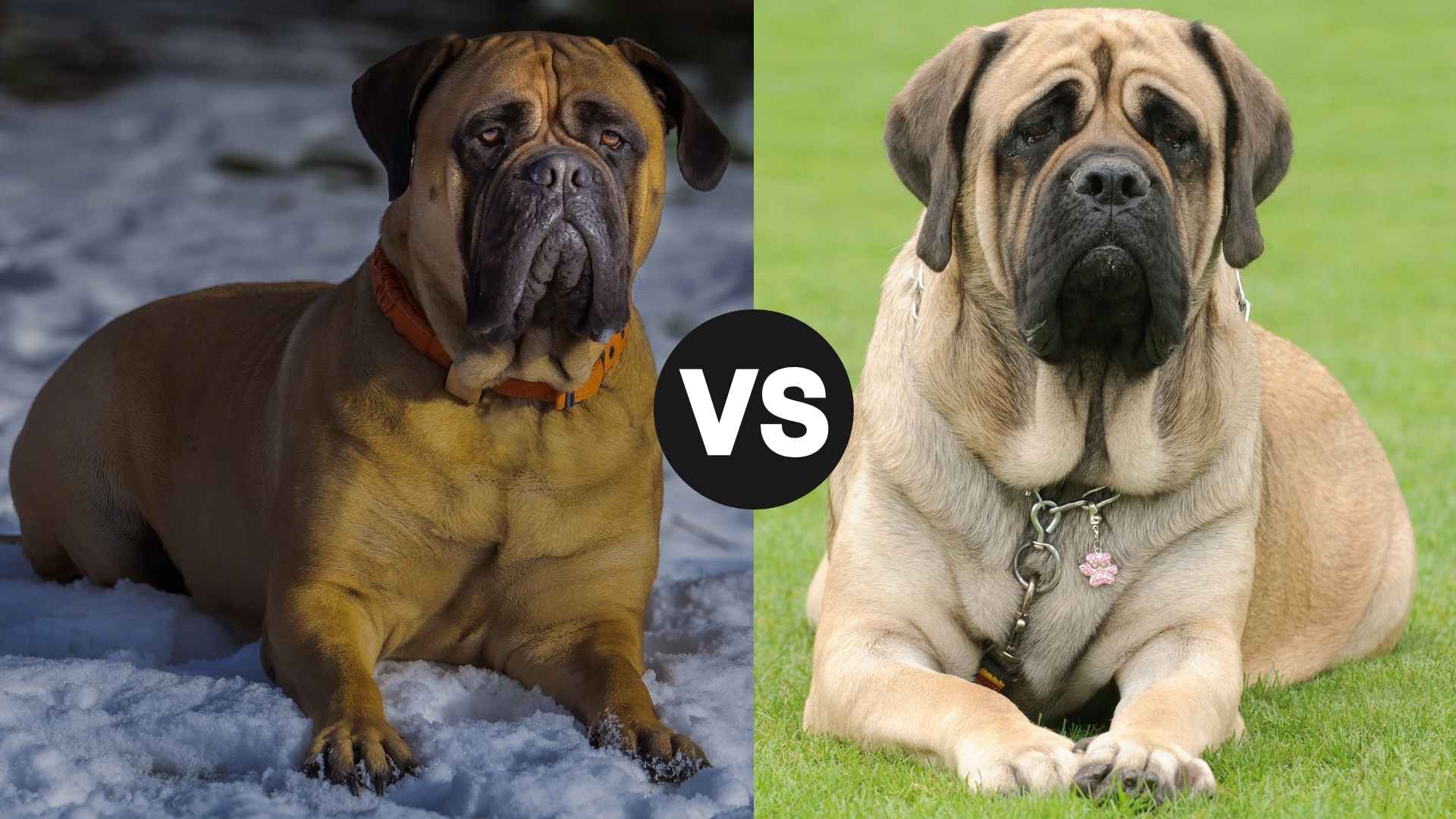Choosing between a Bullmastiff and an English Mastiff is more than just picking a big dog—it’s about welcoming a loyal, loving companion into your life. Both dog breeds are known for their gentle hearts and protective nature, but they bring their own personalities to the table.
One might fit your lifestyle better than the other, and that’s exactly what we’ll help you figure out. Do you need a devoted guardian who’s always on alert? Or are you looking for a laid-back giant who thrives on love and companionship?
These dog breeds may look similar, but their temperaments, energy levels, and care needs are different in ways that matter. By the end of this, you’ll know exactly which one is the perfect match for you and your home.
Bullmastiff vs. English Mastiff
Bullmastiff vs. English Mastiff: Height
Bull Mastiffs and English Mastiffs are both large dogs, but there are key differences in height. Purina stated that Male English Mastiffs stand at least 30 inches, while females reach 27.5 inches. In contrast, Bullmastiff males are 25–27 inches, and females are 24–26 inches.
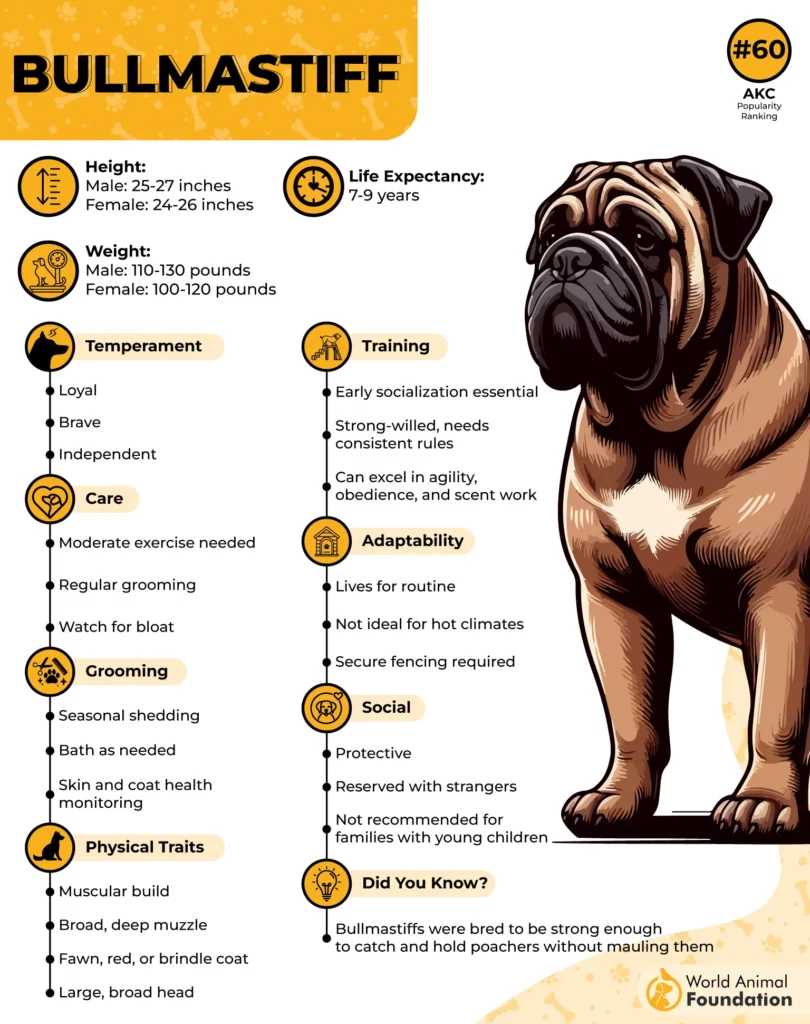
Along with height, weight is another major factor. English Mastiffs can weigh between 120 and 230 pounds, while Bullmastiffs typically range from 100 to 130 pounds. Their sturdy frames add to their protective nature and presence.

Despite these differences, both breeds share a strong, muscular build. The English Mastiff’s larger size makes it more imposing, while the Bullmastiff is slightly more compact yet powerful.
These height variations matter when considering space and handling. A larger size, like the English Mastiff, may require more room and strength, while the Bullmastiff is slightly easier to manage.
It’s interesting that both breeds have a rich history as guard dogs and companions. The English Mastiff’s grandeur and the Bullmastiff’s agility reflect their unique development and roles over time.
Bullmastiff vs. English Mastiff: Coat Type
When comparing the coat types of Bullmastiffs and English Mastiffs, both breeds exhibit short, dense fur that lies close to the body, providing protection from various weather conditions. This similarity contributes to their similar appearance, often leading to confusion between the two breeds.
Orvis mentioned that both display coat colors in fawn, brindle, and apricot (red in Bullmastiffs), with a dark mask on the muzzle, eyes, and ears. This shared color palette adds to their similar appearance, making it essential to recognize other distinguishing features.
Despite their similar appearance, there are key differences in their coat textures. The English Mastiff’s coat is short and coarse, with a dense undercoat, providing a weather-resistant layer. In contrast, the Bullmastiff’s coat is short and smooth, lacking a dense undercoat.
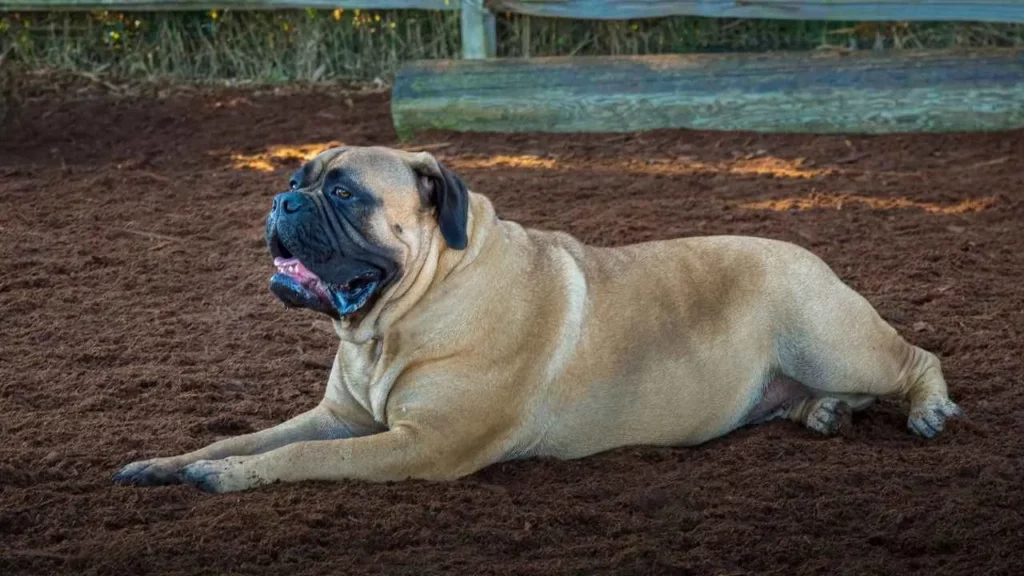
These differences in coat texture influence grooming needs. The English Mastiff’s dense undercoat requires regular brushing to prevent matting and manage shedding. The Bullmastiff’s smoother coat is easier to maintain, needing less frequent grooming.
These two dogs are known for their affectionate nature towards family members. Their coats, while differing in texture, are low-maintenance compared to longer-haired breeds, making them suitable for owners seeking a large, affectionate companion without extensive grooming requirements.
While Bullmastiffs and English Mastiffs share the same size and coat colors, the key differences lie in texture and undercoat presence. These distinctions affect their grooming needs but do not diminish their shared reputation as gentle giants and loyal family companions.
Bullmastiff vs. English Mastiff: Temperament
Bullmastiffs and English Mastiffs, while sharing a common lineage, exhibit distinct behavioral traits. Both breeds are loyal and protective, but their interactions with family members and strangers can differ.
Bullmastiffs are fearless and confident. They are natural guardians, instinctively protective of their families. This breed is more active and agile but can be stubborn, requiring consistent training.
English Mastiffs are typically more laid-back and docile. They are affectionate dogs, often referred to as “gentle giants.” While protective, they are less likely to be aggressive and usually remain calm.
Both dog breeds are known to drool, which is more pronounced in English Mastiffs due to their size. Their large jowls contribute to this characteristic, something potential owners should be prepared for.
Bullmastiffs require regular playful exercise and benefit from a fenced yard. English Mastiffs need less activity and are content with moderate walks and playtime.
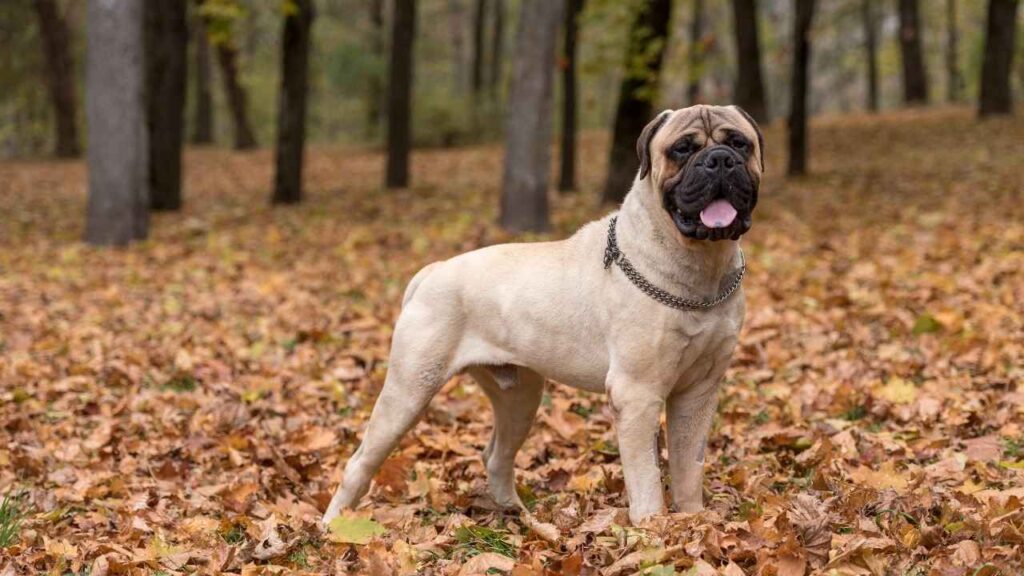
Training is essential for both breeds. Bullmastiffs can be stubborn and need consistency, while English Mastiffs, though more docile, still require firm guidance to avoid bad habits.
Both breeds are generally quiet and do not bark excessively. However, they can be reserved around strangers, making early socialization important for a well-adjusted family companion.
Bullmastiff vs English Mastiff: Sensitivity
When considering the sensitivity of Bullmastiffs and English Mastiffs, both breeds are known for their deep connection to human emotions. They often sense and respond to their owners’ feelings, offering comfort during times of distress.
Bullmastiffs, with their shorter snouts, are affectionate dogs that thrive on close human companionship. They are particularly gentle and patient with children, making them excellent family pets.
English Mastiffs also exhibit a high degree of sensitivity. They are attuned to their owners’ emotions and can become anxious when left alone for extended periods. This breed’s gentle nature makes them well-suited for families with children and other pets, including cats.
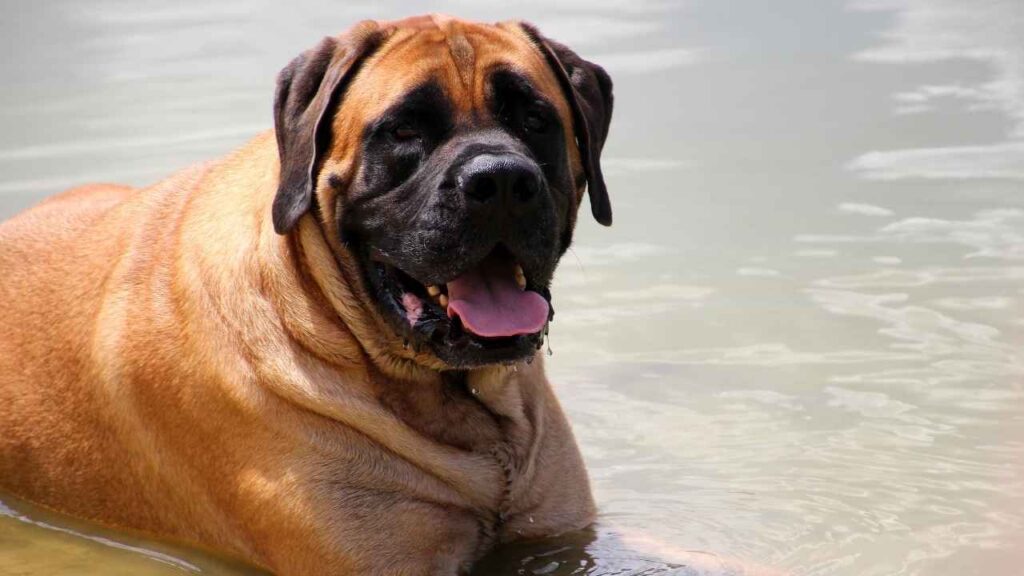
Both breeds benefit from early socialization to ensure they are comfortable around various people and animals. Introducing them to different environments and experiences can help mitigate any potential anxiety or stress.
Training should be approached with patience and positive reinforcement. Harsh methods can harm their sensitive dispositions, so it’s essential to use gentle techniques to teach desired behaviors.
Providing a stable and loving home environment is crucial for these sensitive breeds. They thrive when they feel secure and valued as part of the family unit.
Both Bullmastiffs and English Mastiffs are sensitive and affectionate dogs that form strong bonds with their human companions. Their gentle natures and responsiveness to emotions make them wonderful additions to families prepared to meet their emotional needs.
Bullmastiff vs. English Mastiff: Health Concerns
Bullmastiffs and English Mastiffs are both large breeds with specific health concerns. Understanding these issues is crucial for potential owners to ensure the well-being of these large dogs.
Both dog breeds are prone to hip dysplasia, a genetic condition where the hip joint doesn’t fit properly into the hip socket, leading to discomfort and arthritis. Maintaining a healthy weight and providing regular, appropriate exercise can help manage this condition.
Due to their deep chests, both breeds are susceptible to gastric torsion, or bloat, a life-threatening condition where the stomach twists, trapping gas and fluids. Symptoms include a distended abdomen, restlessness, and unproductive retching. Immediate veterinary attention is essential.
Bull Mastiffs, with their short muzzles, may experience brachycephalic syndrome, leading to breathing difficulties, especially in hot or humid weather. Monitoring their activity and avoiding excessive exercise during extreme temperatures is advisable.

Both breeds can suffer from elbow dysplasia, a developmental issue affecting the elbow joint, causing lameness and arthritis. Early detection and management through weight control and appropriate exercise are vital.
Regular veterinary check-ups are crucial to monitor and address these health issues promptly. Providing a balanced diet, maintaining a healthy weight, and ensuring regular, appropriate exercise can help mitigate these health problems.
According to the American Kennel Club (AKC), Bullmastiffs and English Mastiffs are generally nice dogs, but they are prone to specific health concerns. Prospective owners should be aware of these issues and commit to providing the necessary care to ensure their pets lead healthy, fulfilling lives.
Bullmastiff vs. English Mastiff: Lifespan
When considering the lifespan of Bullmastiffs and English Mastiffs, it’s important to note that both breeds have relatively shorter life expectancies compared to smaller dogs. Bullmastiffs typically live between 7 to 9 years. In contrast, English Mastiffs have a lifespan ranging from 6 to 10 years.
These life expectancies are influenced by their large size and predisposition to certain health issues. Responsible breeding practices aim to improve the overall health and longevity of these purebred dogs.
Crossbreeding has been explored to enhance genetic diversity and potentially extend lifespan. However, the outcomes can be unpredictable, and it’s essential to research and consult with reputable breeders when considering such options.
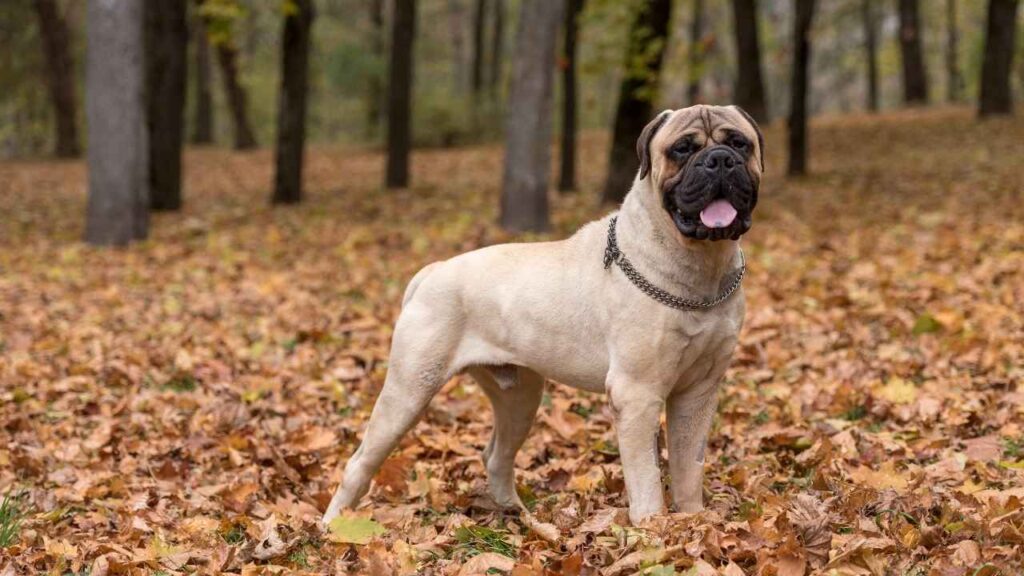
Providing a balanced diet, regular exercise, and routine veterinary check-ups can contribute to a healthier life for these breeds. Early detection and management of health issues are crucial in promoting longevity.
Despite their shorter lifespans, Bullmastiffs and English Mastiffs offer years of companionship and loyalty. Prospective owners should be prepared for the commitment and responsibilities associated with caring for these large breeds.
Creating a safe and comfortable environment within the house is vital for their well-being. Adequate space and appropriate accommodations can enhance their quality of life.
While both Bullmastiffs and English Mastiffs have relatively short lifespans, dedicated care and attention can help maximize their years as cherished pets.
Conclusion
Choosing between a Bullmastiff and an English Mastiff comes down to understanding their key differences. Both breeds share a strong history, but their personalities, care needs, and health concerns set them apart.
Originating from the Roman Empire, English Mastiffs were once revered as war dogs, known for their massive size and protective nature. Bullmastiffs, a cross between Bulldogs and Mastiffs, were bred for guarding estates, making them more agile and alert.
When it comes to diet, both breeds eat a substantial amount due to their size. Providing high-quality nutrition is essential to support their overall health and manage potential weight issues.
Socialization is crucial, as these dogs can be reserved around other dogs and strangers. Early training and consistent leadership help them develop into well-behaved companions.
If you’re considering adding one of these loyal protectors to your home, choosing a responsible breeder is essential. Health screenings and ethical breeding practices play a significant role in ensuring a strong and well-adjusted pet.
Ready to welcome one of these incredible dogs into your life? Research carefully, assess your lifestyle, and find the perfect fit for your family!


